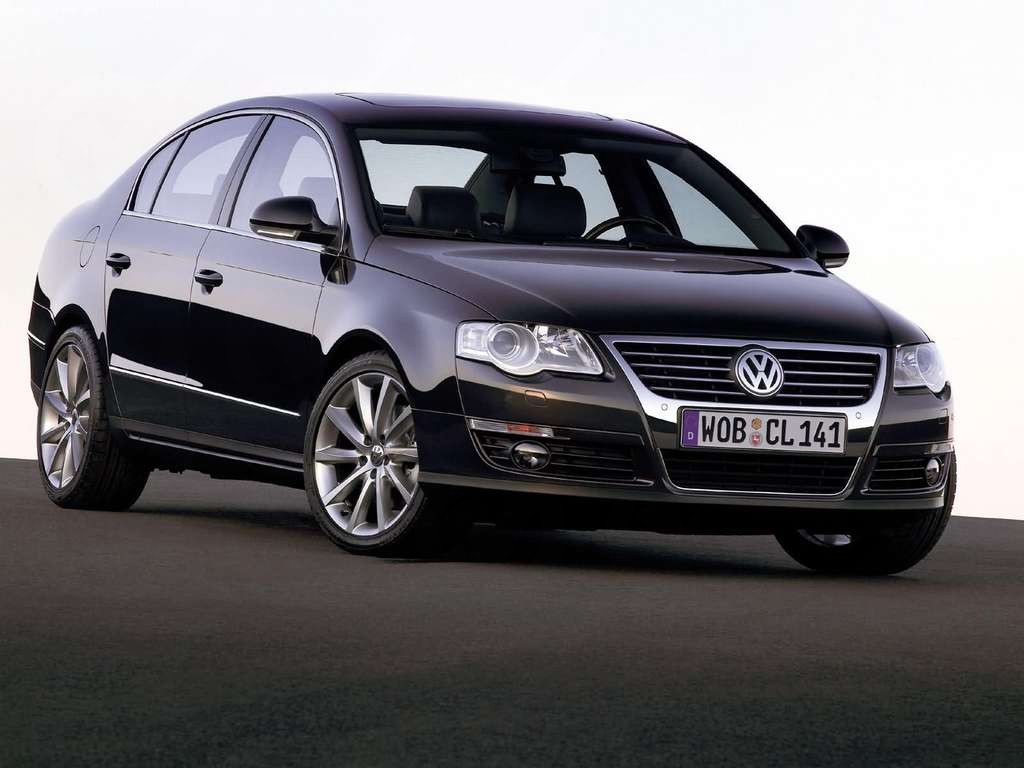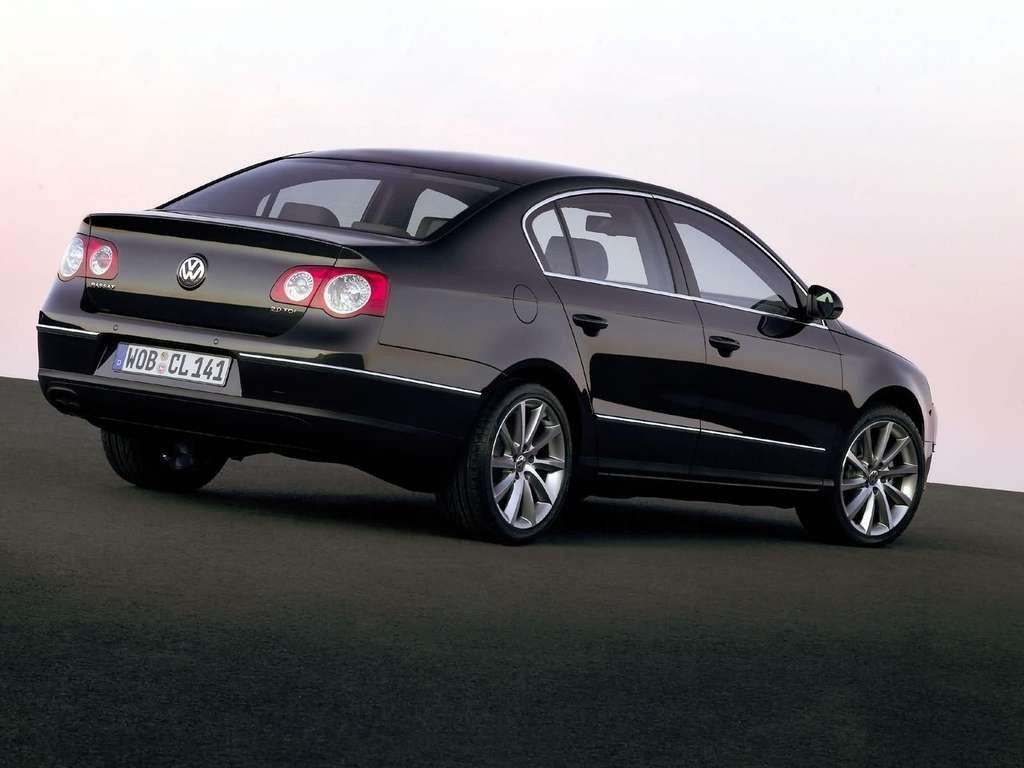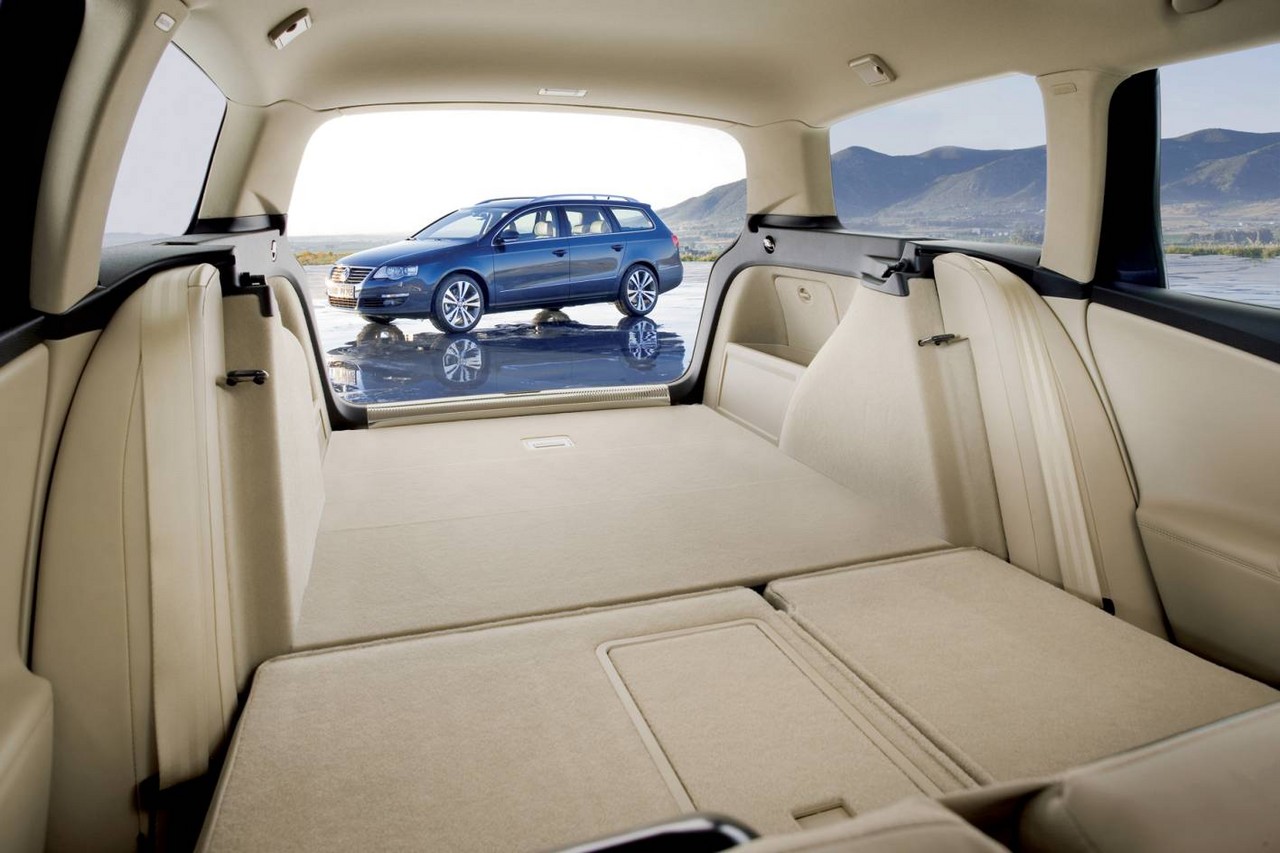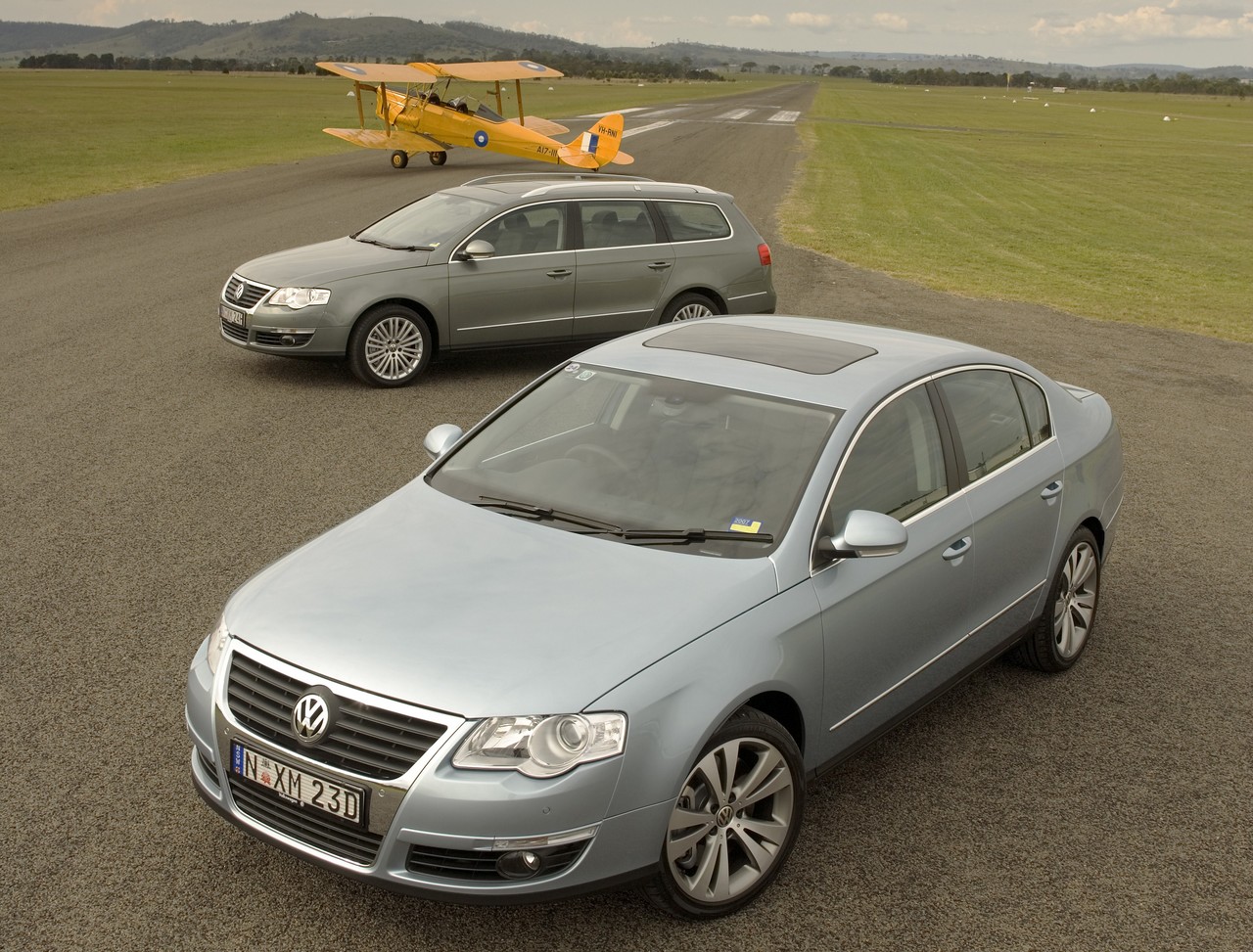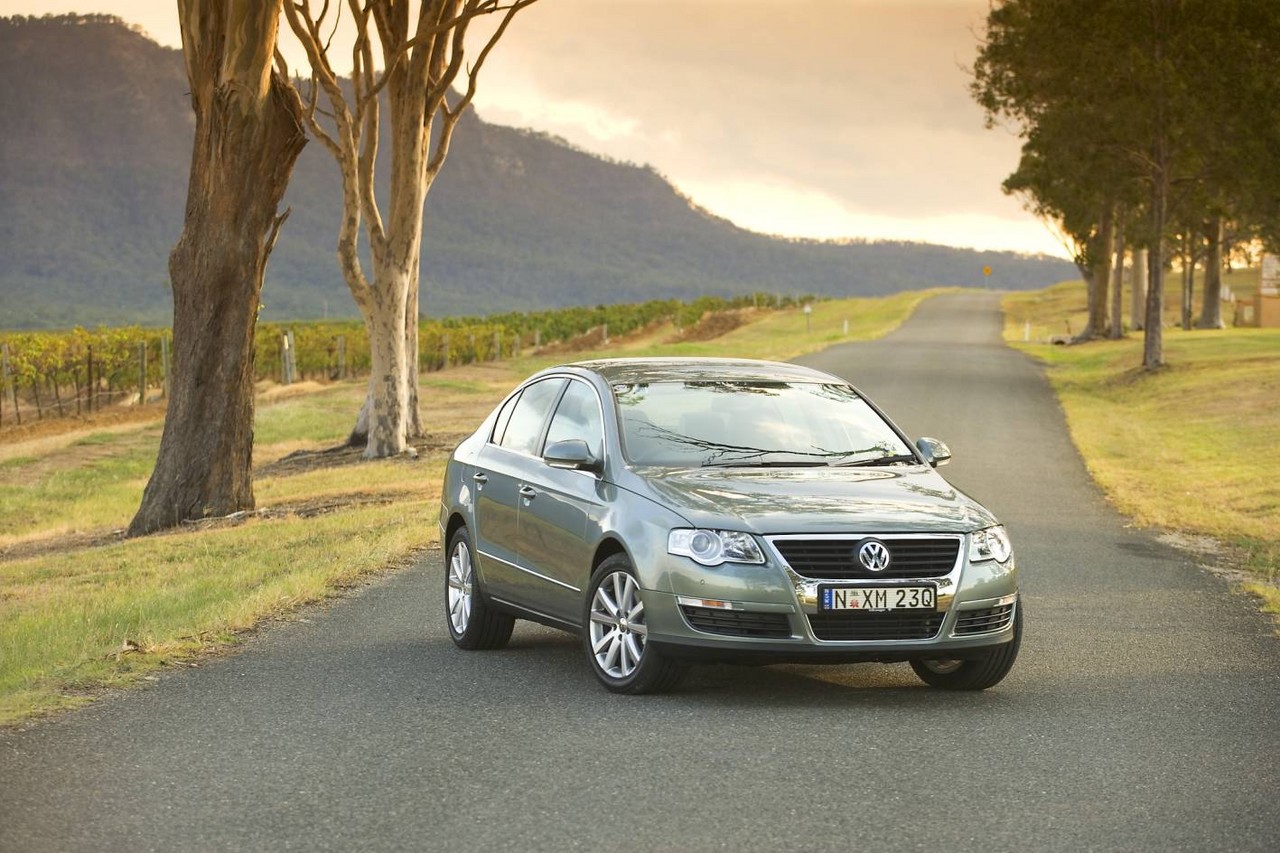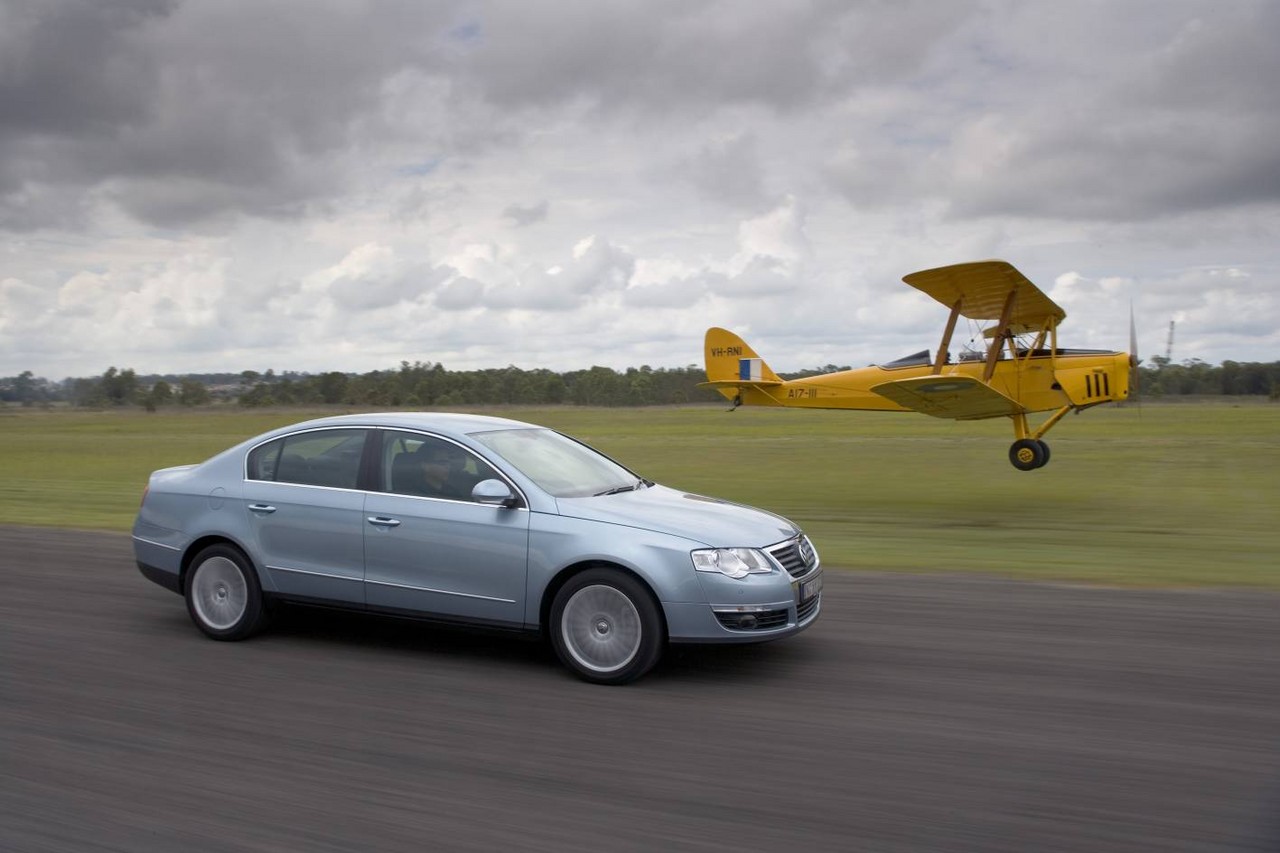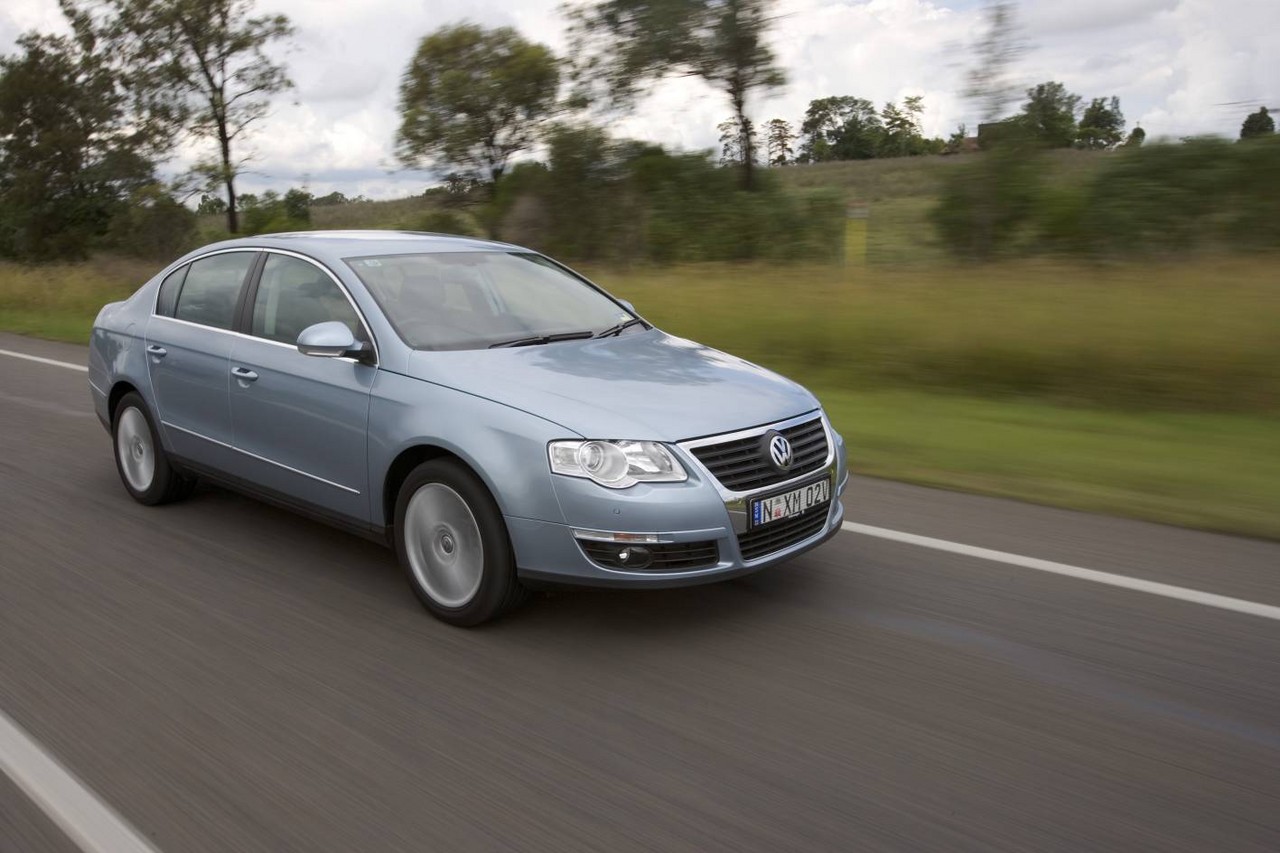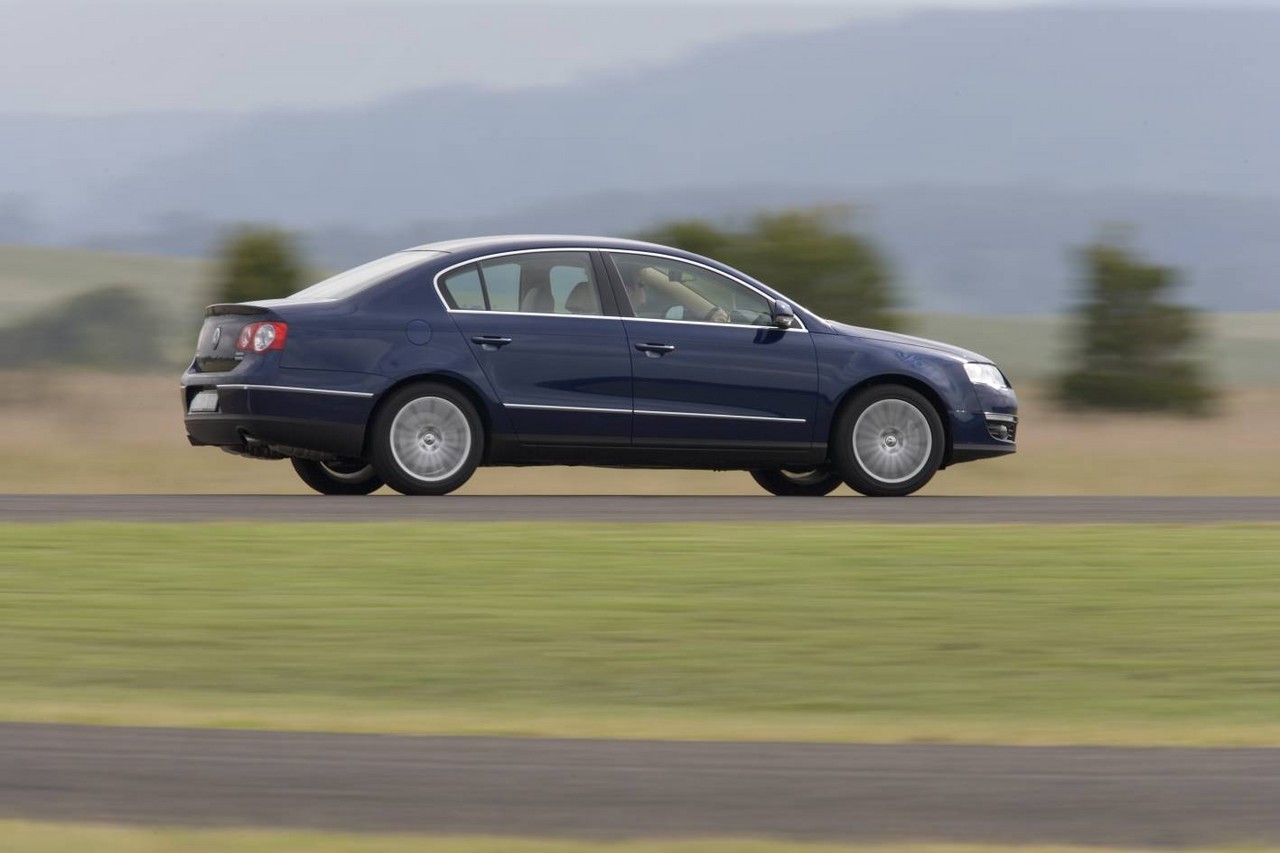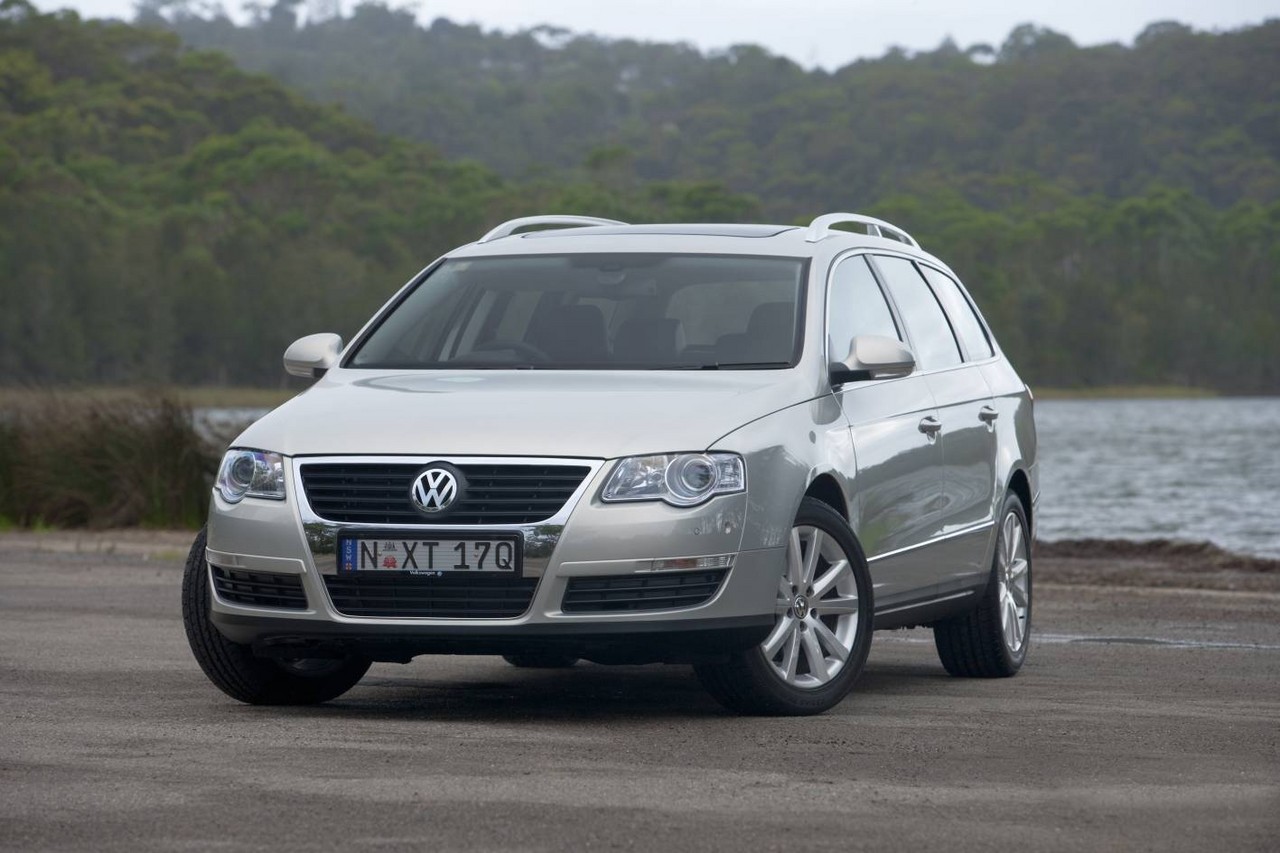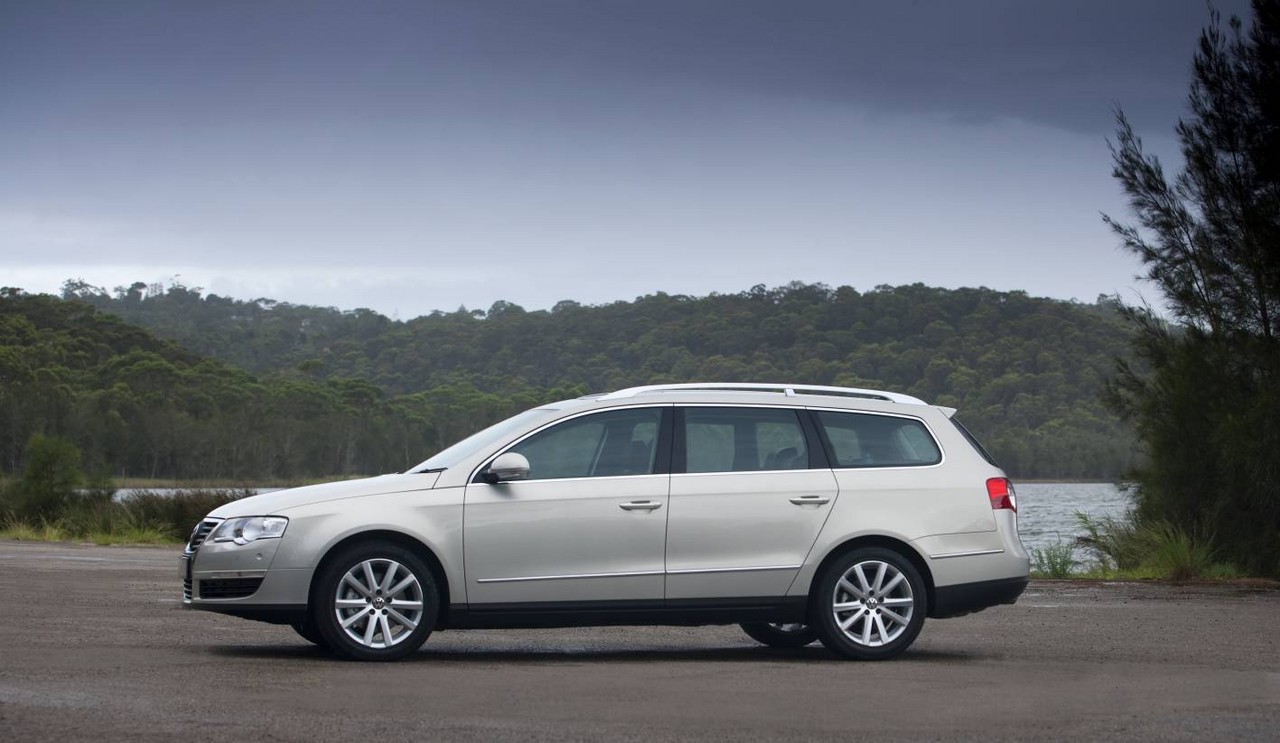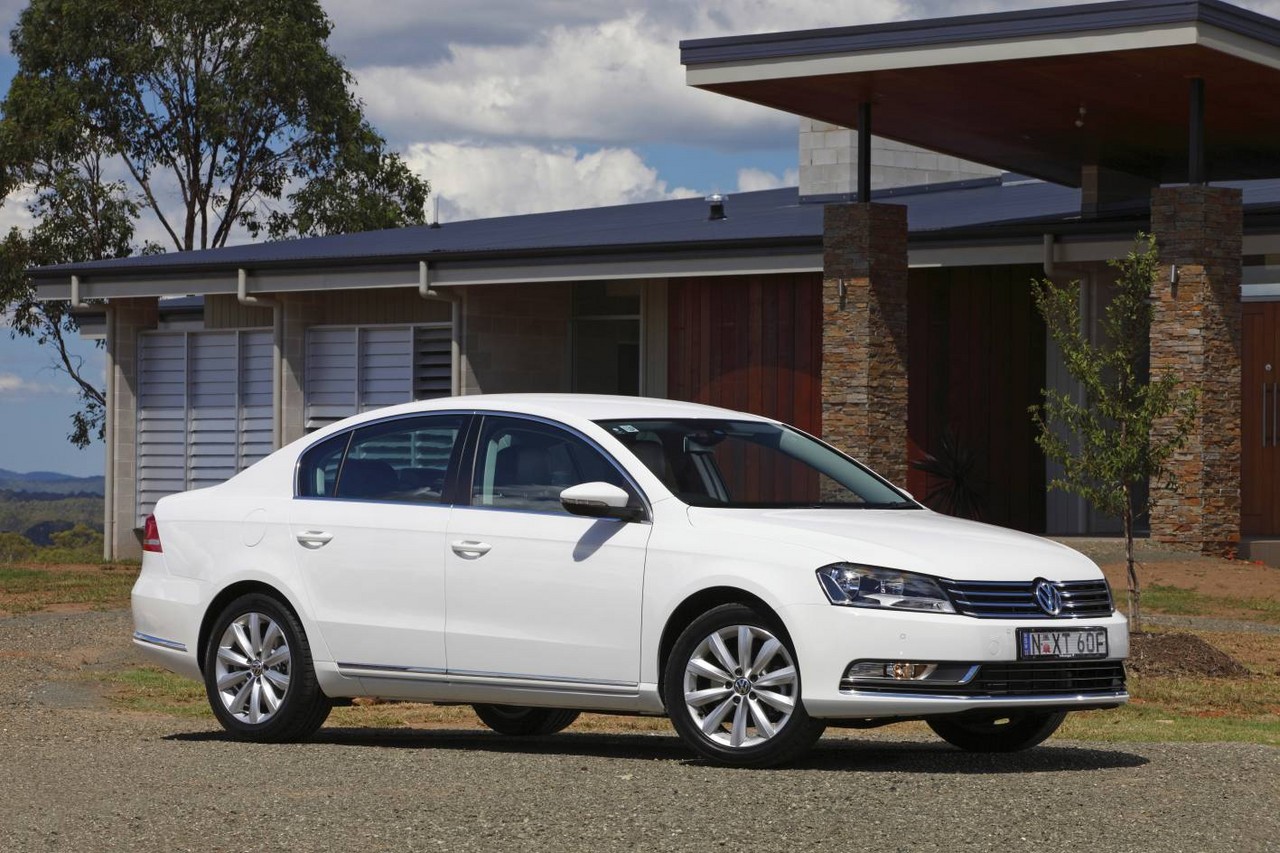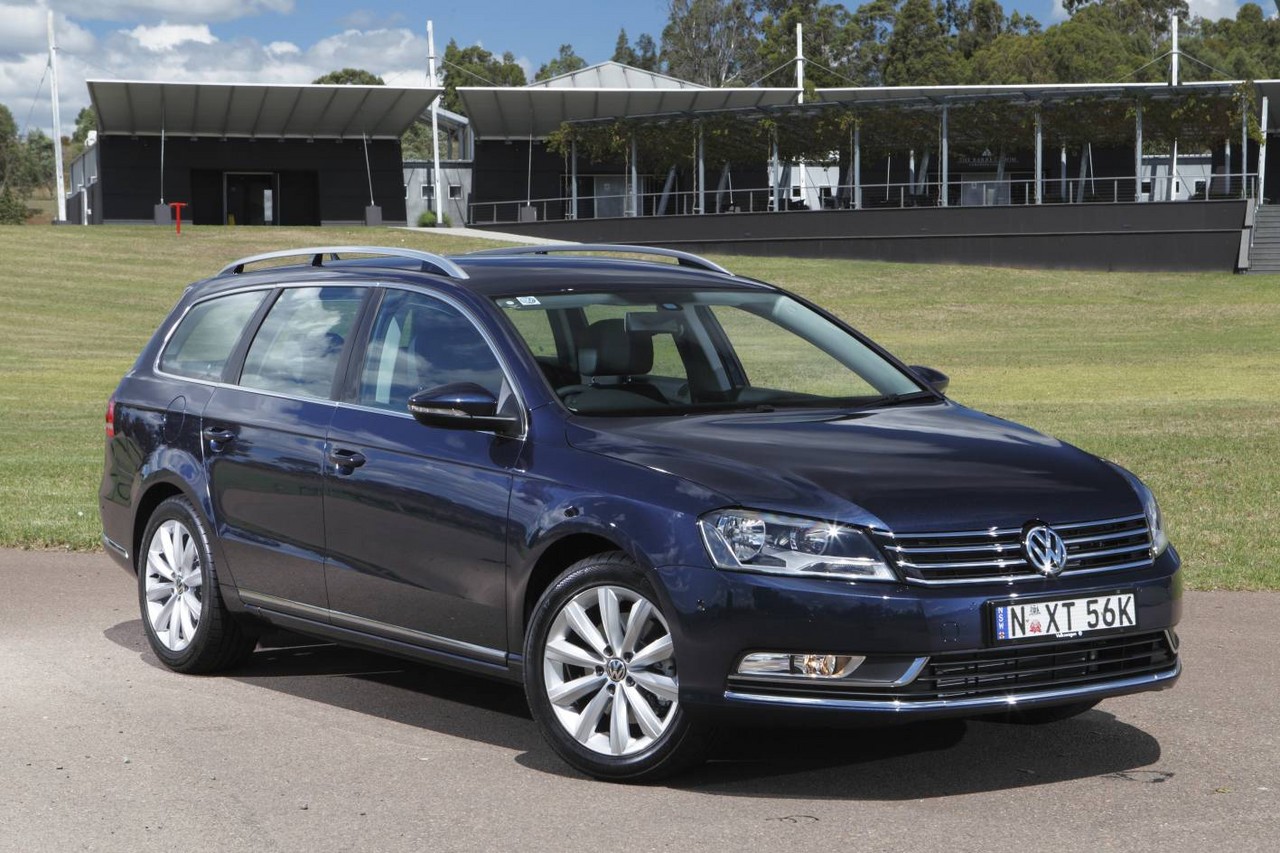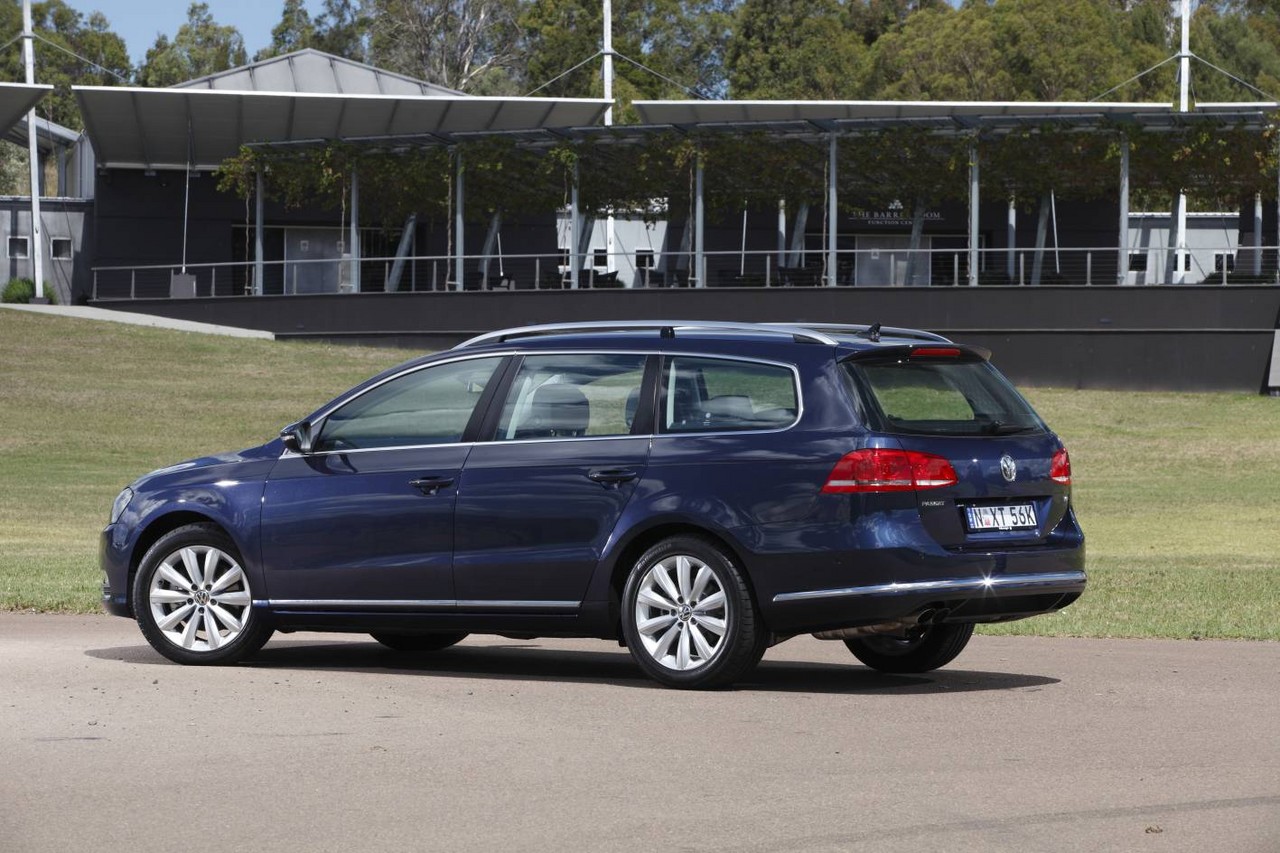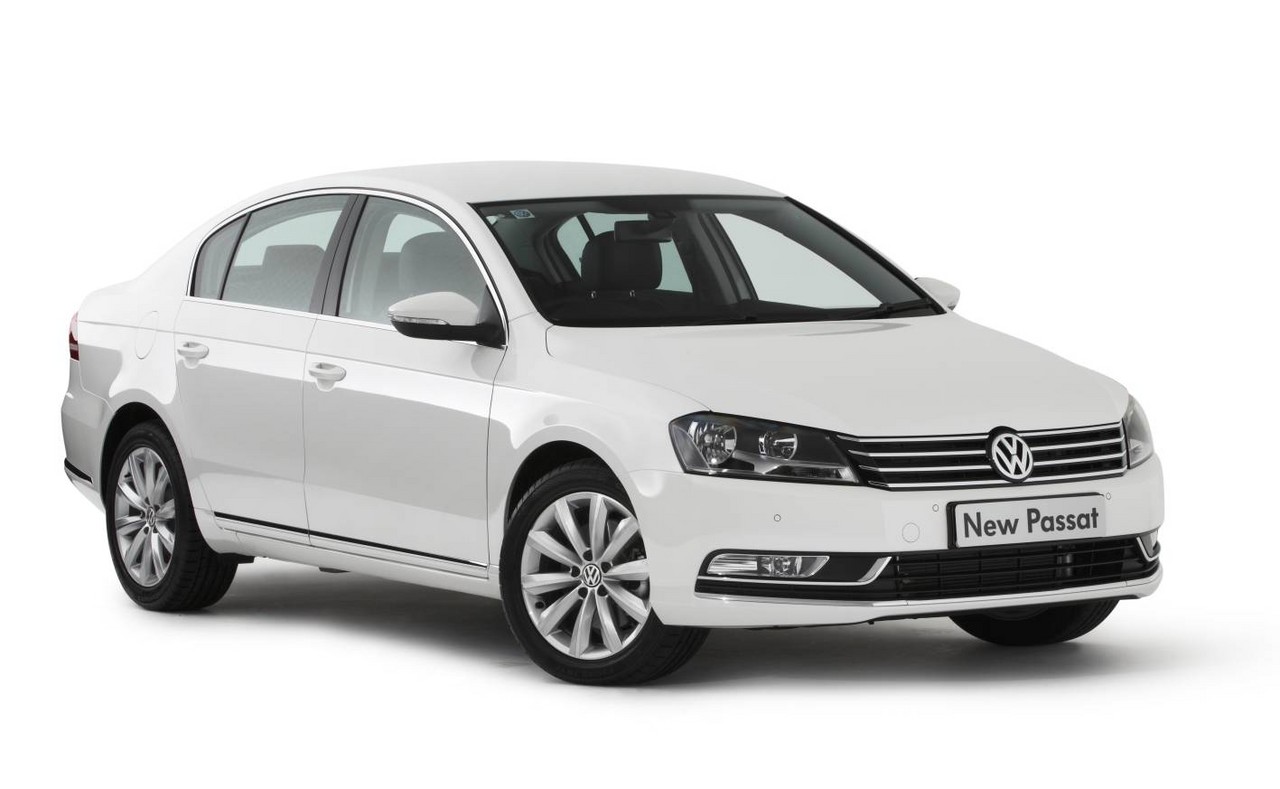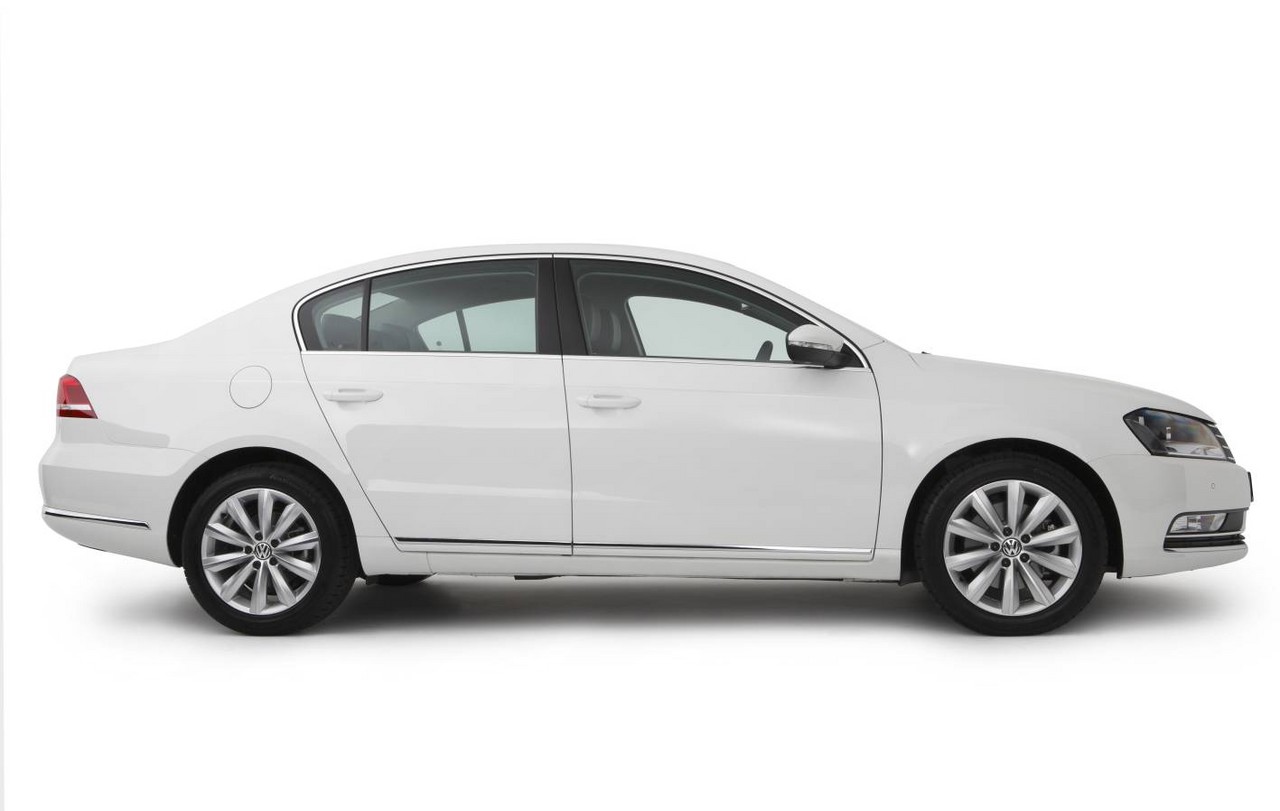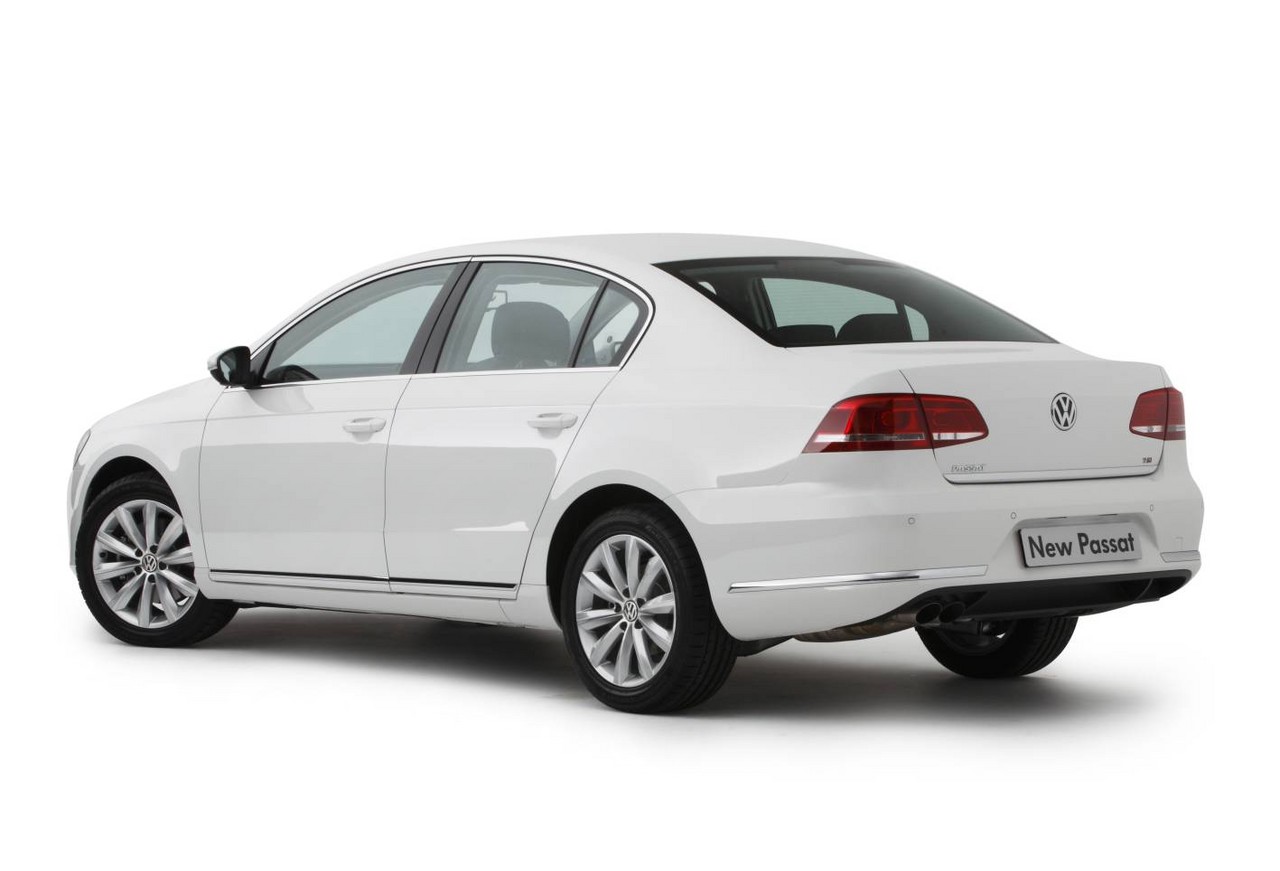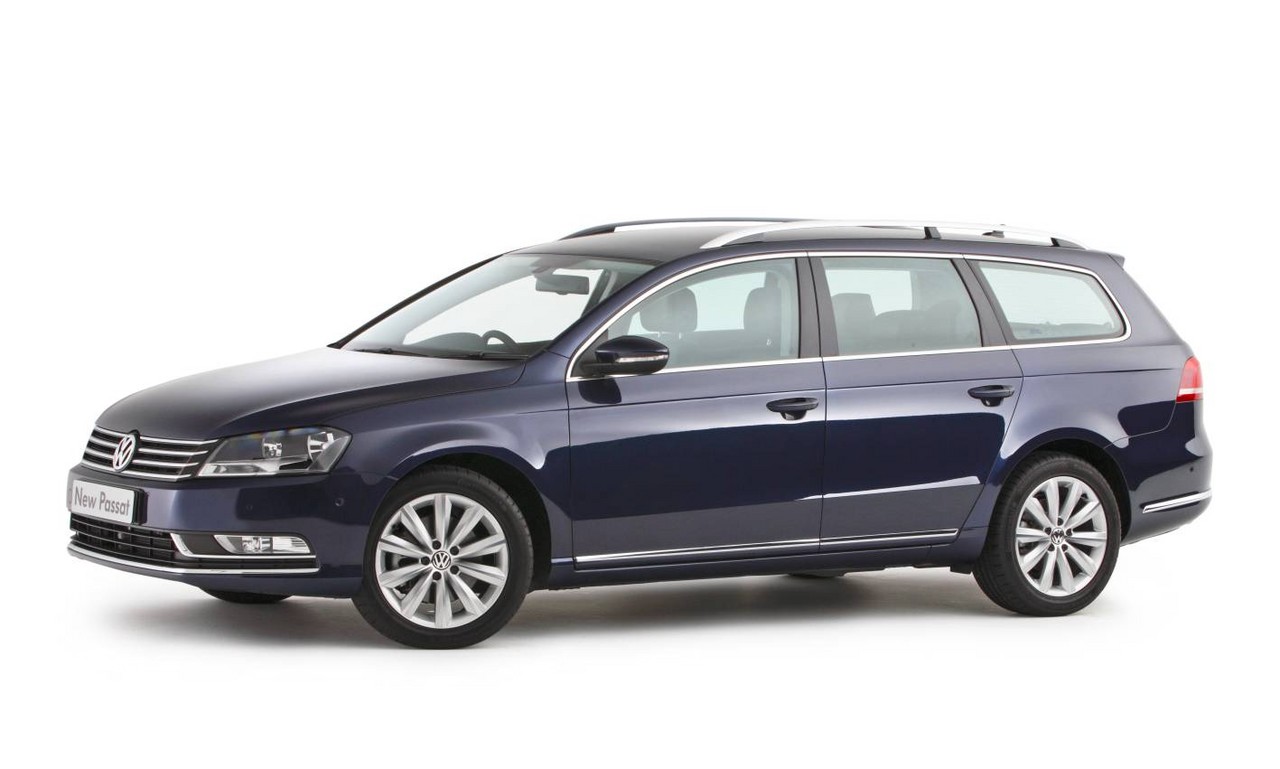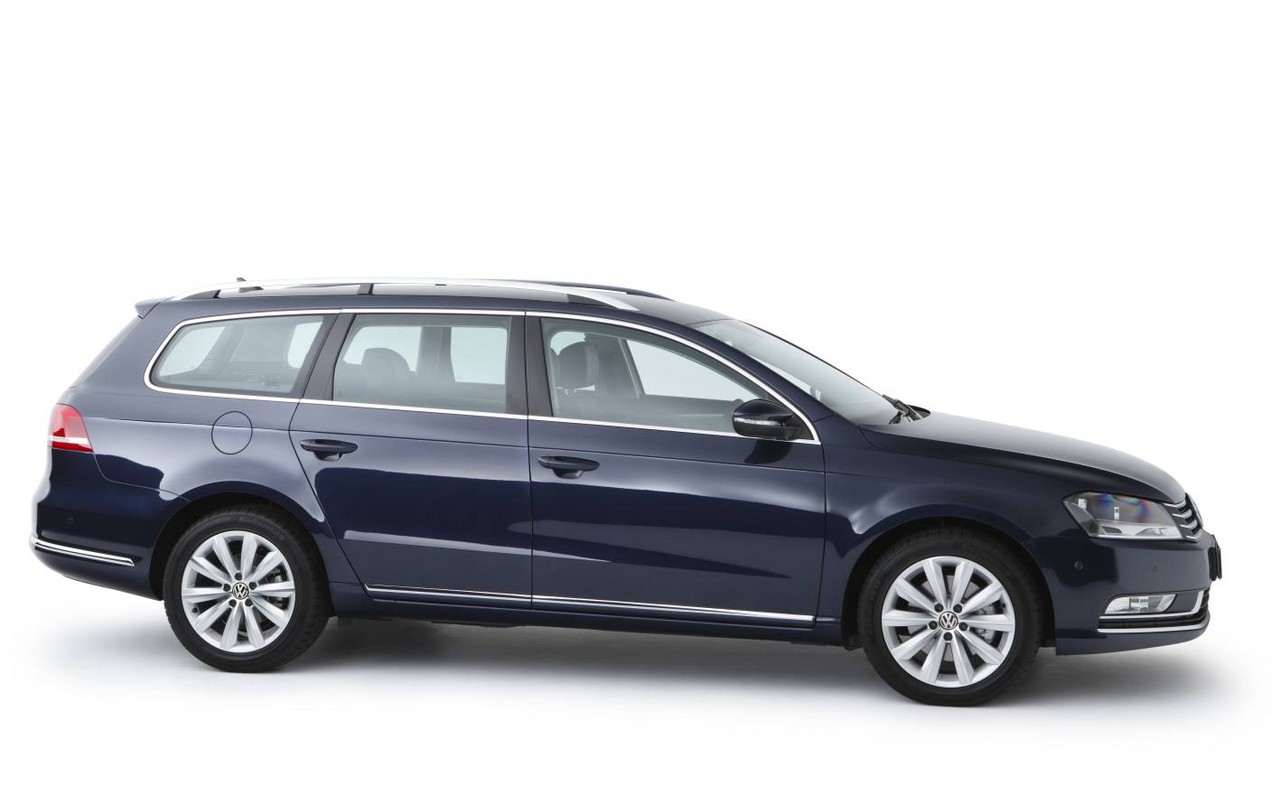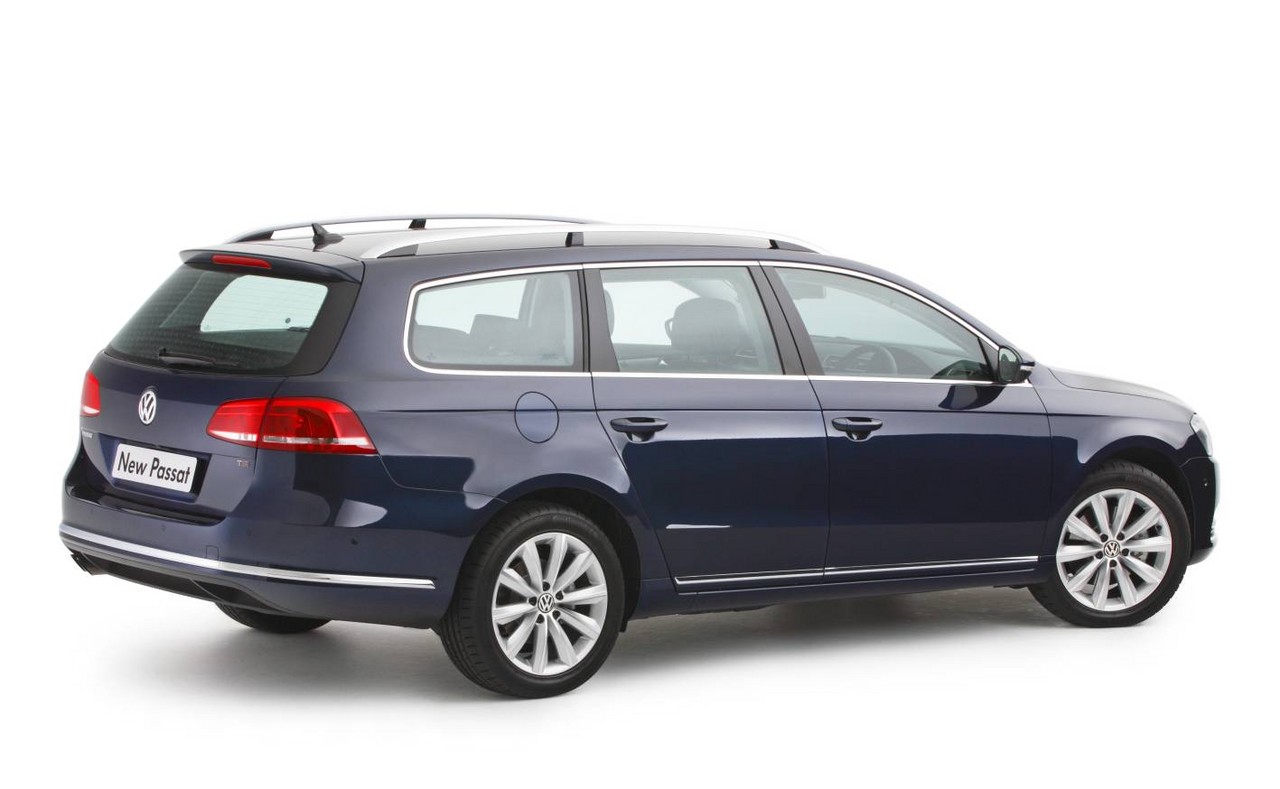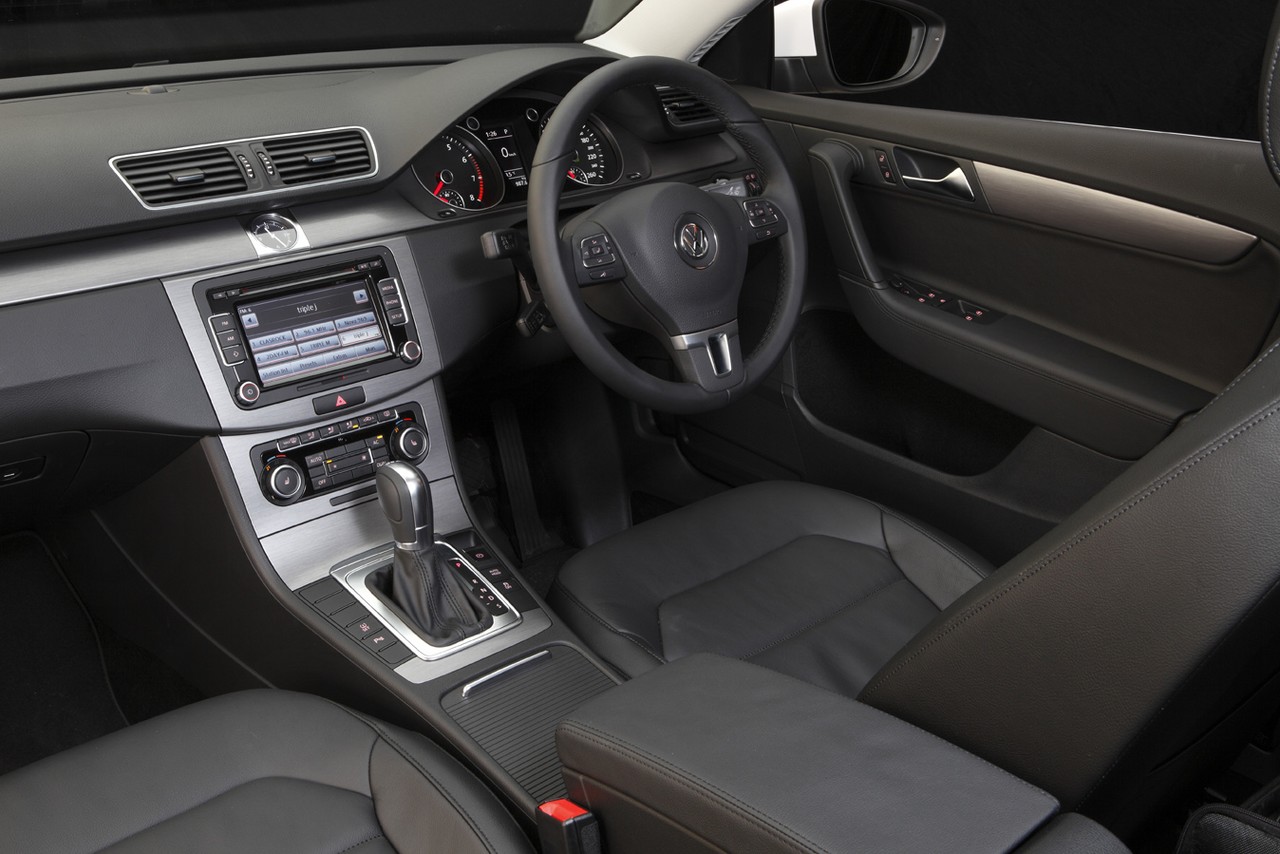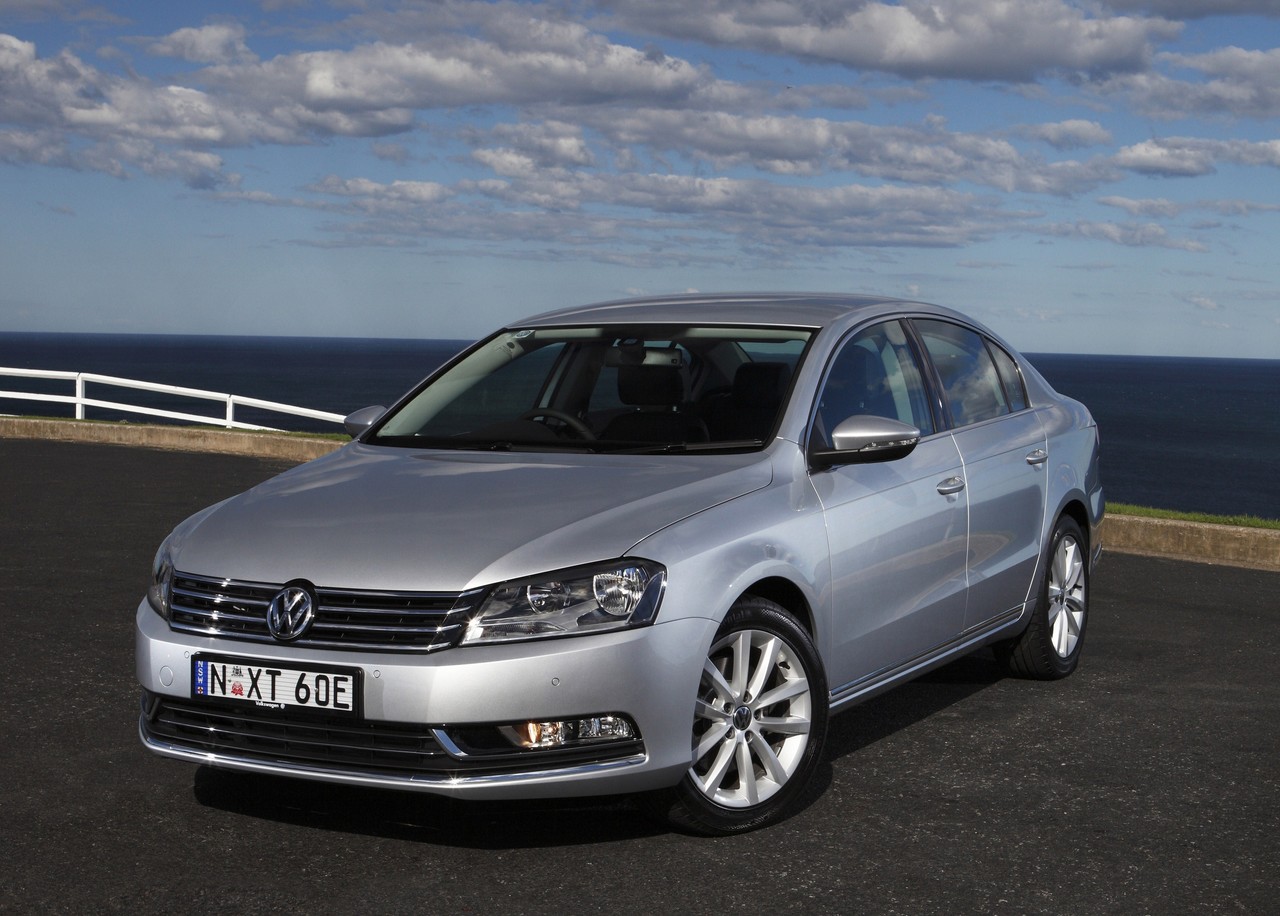
- For Passat R36 and 220FSI, repsonsive 3.6-litre V6 engine
- Frugal 2.0-litre turbo-diesel engines
- DSG provides fast gearshifts
- Spacious interior
- Euro suspension settings lack compliance at low-speeds and over uneven surfaces
- Interior finishes fall short of B5.5 Passat
- Tyre roar on coarse-chip roads
- For 3.2 FSI and 3.6 FSI engines, carbon deposits can accumulate on intake valves
- For six-speed DSG from 2007-09, excessive wear of solenoid valves in the Mechatronic unit can cause jerky gearshifts
Review: Volkswagen B6 Passat (2006-11)
Overview
Released in March 2006, the Volkswagen B6 Passat was available as a sedan or wagon. Manufactured in Germany, the VW B6 Passat range initially consisted of the 2.0 TFSI, 2.0 TDI and 3.2 FSI. However, the range was expanded in August 2007 with the 125 kW 2.0 TDI (see table below).
In August 2008, a change in naming conventions saw the 2.0 TFSI become the 147TSI, while the 2.0 TDI became the 103TDI and 125TDI variants to reflect the different power outputs. Furthermore, the R36 was introduced and the 3.2 FSI was only offered as a ‘Highline’ edition which served to distinguish it from the smaller-engined and less well-equipped Passats. In February 2010, the range underwent a minor update with the introduction of the price-leading 118TSI and discontinuation of the 103TDI and147TSI (detailed further, below).
Compared to the Volkswagen Mk.5 Passat , the Mk.6 Passat sedan was 62 mm longer (at 4765 mm), 74 mm wider (1820 mm), 10 mm taller (1472 mm) and had a 6 mm longer wheelbase (2709 mm). Compared to the sedan, the wagon was 9 mm longer (4774 mm) and 45 mm taller (1517 mm). Significantly, the Mk.6 Passat was based on an extended Mk.5 Golf platform rather than the Audi B6 A4 platform of its predecessor. As a result, the Mk.6 Passat had MacPherson strut front suspension, four-link rear suspension, transversely mounted engines and electromechanical power steering; the new chassis also achieved a 57 per cent increase in torsional rigidity (32,400 Nm/degree).
| Variant | Years | Engine | Trans. | Peak power | Peak torque |
|---|---|---|---|---|---|
| 2.0 TFSI | 2006-08 | 2.0-litre BWA/CAWB turbo petrol I4 | 6sp auto | 147 kW at 5100 rpm | 280 Nm at 1800-4700 rpm |
| 147TSI | 2008-10 | ||||
| 2.0 TDI | 2006-08 | 2.0-litre BKP/CBAB turbo-diesel I4 | 6sp DCT | 103 kW at 4000 rpm | 320 Nm at 1750-2500 rpm |
| 103TDI | 2008-10 | ||||
| 2.0 TDI | 2007-08 | 2.0-litre BMR/CBBB turbo-diesel I4 | 6sp DCT | 125 kW at 4200 rpm | 350 Nm at 1750-2500 rpm |
| 125TDI | 2008-11 | ||||
| 3.2 FSI | 2006-11 | 3.2-litre AXZ petrol V6 | 6sp DCT | 184 kW at 6250 rpm | 330 Nm at 2750-3750 rpm |
| R36 | 2008-11 | 3.6-litre BWS petrol V6 | 6sp DCT | 220 kW at 6600 rpm | 350 Nm at 2400-5300 rpm |
| 118TSI | 2010-11 | 1.8-litre CDAA turbo petrol I4 | 7sp DCT | 118 kW at 4500 rpm | 250 Nm at 1500-4500 rpm |
4-Motion all-wheel drive system
The VW Passat 3.2 FSI and R36 were fitted with Volkswagen’s 4-Motion all-wheel drive system. The system consisted of a Haldex coupling mounted in front of the rear axle differential, with the input shaft separated from the output shaft to the rear axle differential. As such, 4-Motion system provided front-wheel drive in normal conditions, but utilised hydraulic and electronic systems to detect a loss of traction at the front wheels. The clutch plates would then engage to direct up to 50 per cent of the engine’s torque to the rear axle.
Safety equipment
Standard safety equipment for the Volkswagen B6 Passat included dual front airbags, side airbags for front and rear occupants, full-length curtain airbags (i.e. for front and rear occupants), ABS, electronic brake force distribution, brake assist, electronic stability control, traction control, active front seat head restraints, front seatbelt load limiters and front and outer rear seatbelt pretensioners.
Euro NCAP crash testing
In Euro NCAP crash testing , a 2005 VW Passat with a 1.9-litre turbo-diesel engine (not available in Australia) received a five star adult occupant protection rating with a score of 33.99 out of 37. In the frontal offset crash test, there was a slight risk of serious leg injury for the driver due to contact with the steering column and a slight risk of serious chest injury for the front passenger. In the side impact and pole test, however, maximum points were awarded.
Features
Standard features for the Volkswagen Passat 2.0 TFSI/147TSI, 2.0 TDI/103TDI/125TDI and 118TSI included 17-inch alloy wheels, eight speaker sound system with six-stack CD player, dual zone climate control air conditioning, cruise control, front and rear parking sensors, leather-wrapped steering wheel and gearshift, steering wheel audio controls, automatic headlights, rain-sensing wipers, electric park brake, remote central locking, power windows and heated mirrors, six-way power adjustable driver’s seat, height adjustable front seats, height and reach adjustable steering wheel, 60/40 split and folding rear seats, cooled glovebox, trip computer, tyre pressure sensor, 12 volt power outlet and immobiliser.
Beyond this, the Passat 3.2 FSI added leather seats, heated front seats, front fog lamps and a motion-sensing alarm.
The range-topping Passat R36 was distinguished by its ten speaker 250-watt sound system, steering wheel gearshift paddles, San Remo micro-fibre and Vienna leather combination upholstery, twelve-way power adjustable front sports seats with ‘electro-pneumatic’ bolsters, directional bi-xenon headlights, smoked tail-lights, rear spoiler and dual chrome exhaust pipes.
Passat Highline edition
In February 2010, a Highline edition of the 125TDI was introduced; compared to the standard 125TDI, the Highline gained Nappa leather upholstery, front fog lights, aluminium interior highlights and a chrome-plated grille. The 3.2 FSI Highline also gained 18-inch alloy wheels, ‘Adaptive Chassis Control’ suspension, power adjustable front seats with driver memory settings, Media Device Interface (MDI) and automatically dipping passenger’s side mirror when reversing. The R36 also received the MDI and was fitted with rear privacy glass.
Specifications
Related links
Review: Volkswagen B7 Passat (2011-14)
Overview
RReleased in April 2011, the Volkswagen B7 Passat introduced a revised range, improved fuel economy, subtle facelift and additional features. As part of the update, the R36 variant was discontinued and the 3.2 FSI was replaced by the 220FSI. Mechanically, energy recuperative braking was standard across the range and the 125 TDI featured idle-stop (engine shutdown when stationary).
Visually, the VW B7 Passat could be identified by its new headlights, four-bar chrome grille and body panels (except for the roof and glass house). Inside, the console layout was revised and there were new trims.
| Variant | Years | Edition | Engine | Drive | Trans. | Peak power | Peak torque |
|---|---|---|---|---|---|---|---|
| 118TSI | 2011-14 | N/A | 1.8-litre CDAA turbo petrol I4 | FWD | 7sp DCT | 118 kW at 4500 rpm | 250 Nm at 1500-4500 rpm |
| 125TDI | 2011-12 | Highline | 2.0-litre CFGB turbo-diesel I4 | FWD | 6sp DCT | 125 kW at 4200 rpm | 350 Nm at 1750-2500 rpm |
| 130TDI | 2013-14 | Highline | 2.0-litre CFGC turbo-diesel I4 | FWD | 6sp DCT | 130 kW at 4200 rpm | 380 Nm at 1750-2500 rpm |
| 220FSI | 2011-14 | Highline | 3.6-litre BWS petrol V6 | AWD | 6sp DCT | 220 kW at 6600 rpm | 350 Nm at 2400-5300 rpm |
Safety equipment
Compared to its B6 predecessor, standard safety equipment for the Volkswagen B7 Passat was extended to include a driver fatigue monitoring system which monitored the driver’s steering behaviour and, if there was a deviation from previously observed behaviour, would issue visual and acoustic warnings.
Euro NCAP testing
Although, the VW B7 Passat was structurally and internally identical to its B6 predecessor for the purposes of occupant protection, Euro NCAP conducted new pedestrian tests due to the modified bodywork. Under Euro NCAP’s updated testing regime , the B7 Passat received a five star safety rating with a 91 per cent adult occupant protection rating and a 77 per cent child occupant protection rating.
Features
For the Volkswagen B7 Passat, standard features were extended to include leather seats and Bluetooth connectivity with audio streaming. Compared to the 3.2 FSI, the 220FSI gained 18-inch alloy wheels and adaptive cruise control with autonomous emergency braking. There was also an optional ‘Park Assist2’ system could reverse into parallel and right-angle parking spaces and included a rear view camera.
September 2012: Passat update
In September 2012, standard Passat features were extended to include satellite navigation (Volkswagen’s RNS510 system) which included a touch screen, 2D and 3D maps, voice control for navigation, an integrated 30GB hard drive, SD card slot and a CD/DVD player; a reversing camera – with static and dynamic parking guidance lines – was also fitted as standard. The Passat wagon was also fitted with a power-operated tailgate as standard.
Brochure
Related links
- Press Kit: Volkswagen B7 Passat (April 2011)
- Specifications: Volkswagen B7 Passat (April 2011)
- Wikipedia.org: Volkswagen Mk.6 Passat
